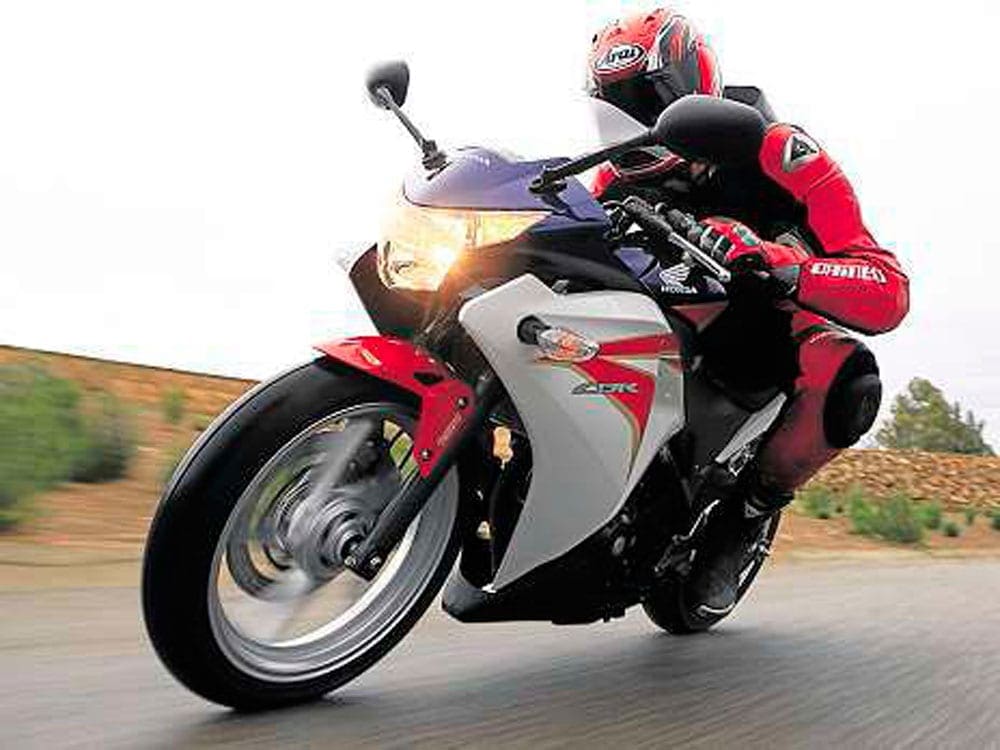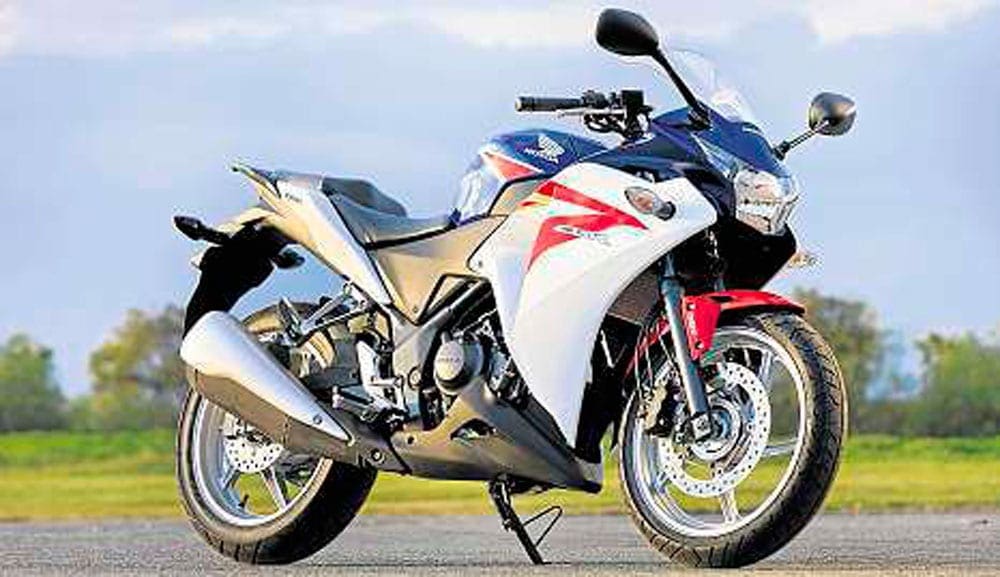There’s a lot more to the all-new CBR250R than meets the eye. This latest model to wear Honda’s sporty CBR-R designation is built not in Japan or even Europe but in Thailand, and will also be produced in India. As well as being an entry level offering in most markets, the 250R has been created as a top-end bike – at least that’s how Honda describe it – in emerging markets, including the hugely populated Asian countries of its birth.
Designing a model for such diverse targets must be no easy task, but Honda looks to have done a good job with the CBR250R. It’s a stylish little bike, for one thing: fully faired, well equipped for a sportster, seemingly finished to a decent standard, and looking rather more fast and high-tech than a simple single-cylinder machine has any right to. Which, given that it was created to attract young riders, is presumably half the battle.
Honda say the engine is all new, though it’s hardly a cutting-edge design. The 249cc, liquid-cooled unit features twin overhead cams and four valves, and has a crankshaft-driven balancer shaft to counter vibes. The cylinder is offset from the crankshaft slightly to reduce friction losses during combustion. Peak output is 26bhp at 8500rpm.
The motor is solidly mounted in a tubular steel frame with narrower cross-members supporting the main tubes. Slim, 37mm non-adjustable forks, a preload-adjustable single shock and 17-inch, five-spoke cast wheels are what you might expect of a sports bike in this category. Honda’s bonus is the addition (optional in some markets) of a combined ABS brake system that links the front and rear single discs.
The CBR also has a small but neat and useful instrument panel that combines an analogue tacho and smaller digital speedo with a panel that includes a clock and fuel gauge. The seat is narrow, and low at just 780mm. The bike weighs just 165kg ready to ride so felt very light and manageable as I leant forward to the raised clip-ons, which give a riding position midway between racy crouch and comfortably upright.
Straight-line performance is perfectly adequate, if nothing that experienced riders are likely to get hugely excited about. The CBR pulled away effortlessly with a very light clutch action and a typically efficient response from its injection system. It never hesitated or spluttered even when the throttle was cracked open at low revs either, and would be quite capable of nipping ahead of most traffic when the lights changed. There’s no particular step in the power delivery; just a gradually increasing urgency, with most action available up near the 8500rpm redline. That means the Honda has to be thrashed to deliver much speed. In
typical single-cylinder style it doesn’t exactly encourage aggressive riding, feeling slightly strained at high revs. At least the balancer shaft meant vibration wasn’t particularly intrusive, and the six-speed box shifted smoothly.
Heading north-eastwards from our launch base outside Seville towards Carmona on the motorway, the CBR rumbled up to an indicated 90mph while I crouched behind the screen with a small rucksack on my back. One smaller, more aerodynamic rider reported seeing 94mph, but unlike some 250cc two-stroke learner bikes of 30 years ago this Honda won’t crack the ton. Still, it was happy to cruise at 70mph, its rider pretty well protected from the cold wind by the fairing and screen.
And the 250 should be admirably economical, too, even if it’s unlikely to match Honda’s claim that it gives over 75mpg in typical conditions, resulting in a range of over 200 miles from its 13-litre tank. Not that you’d want to ride it that far in one go anyway, although comfort from the reasonably soft but well damped suspension and narrow seat seemed pretty good.
So too did the CBR’s handling, which was every bit as light and flickable as you’d hope for from such a light, slim bike with sporty geometry. On a twisty road running through Los Jinetes towards Carmona the Honda was great fun, effortlessly carving through the bends, making good use of its abundant ground clearance and of narrow Road Winner tyres that gripped well, even when a rain shower left the surface looking treacherously slippery.
Those damp conditions made me even more appreciative of the brakes, and in particular of the excellent combined ABS system that is a superb standard feature of a bike in this class. The front and rear single discs slowed the little Honda efficiently in the dry, and on damp roads the anti-lock system would be a major safety aid to inexperienced riders in particular.
Such a high-tech feature is especially impressive given the CBR’s on-the-road price of £3688, which makes it very competitive with Kawasaki’s Ninja 250R. No doubt the Honda’s global sales potential, and especially its low-cost Asian production, play an important part in helping keep its price so low. The CBR250R is less of a sports bike than its name and its racy styling suggest, but it’s a capable little machine and at that price it looks like outstanding value.
Tech Spec
Price: £3688 OTR
Engine: 249cc liquid-cooled DOHC fuel injected sixspeed single with four valves
Max power (claimed): 26bhp@8500rpm
Max torque (claimed): 17.7 lb-ft@7000rpm
Rake and trail: 25º/95mm
Chassis: Steel twin spar
Suspension: Front:37mm telescopic,130mm travel. Rear: Single shock,104mm wheel travel,
adjustments for preload
Brakes: Front:2 twin-piston calipers,296mm discs with combined ABS. Rear: Single-piston caliper, 220mm disc with combined ABS
Wheels/tyres: Front: 110/70 x 17in Road Winner on cast aluminium rim. Rear: 140/70 x 17in Road Winner on cast aluminium rim
Wheelbase: 1369mm
Wet weight (claimed): 165kg kerb
Seat height: 780mm
Fuel capacity: 13 litres (including LCD- LCD-indicated reserve)
Colours: Blue/white/red, black




